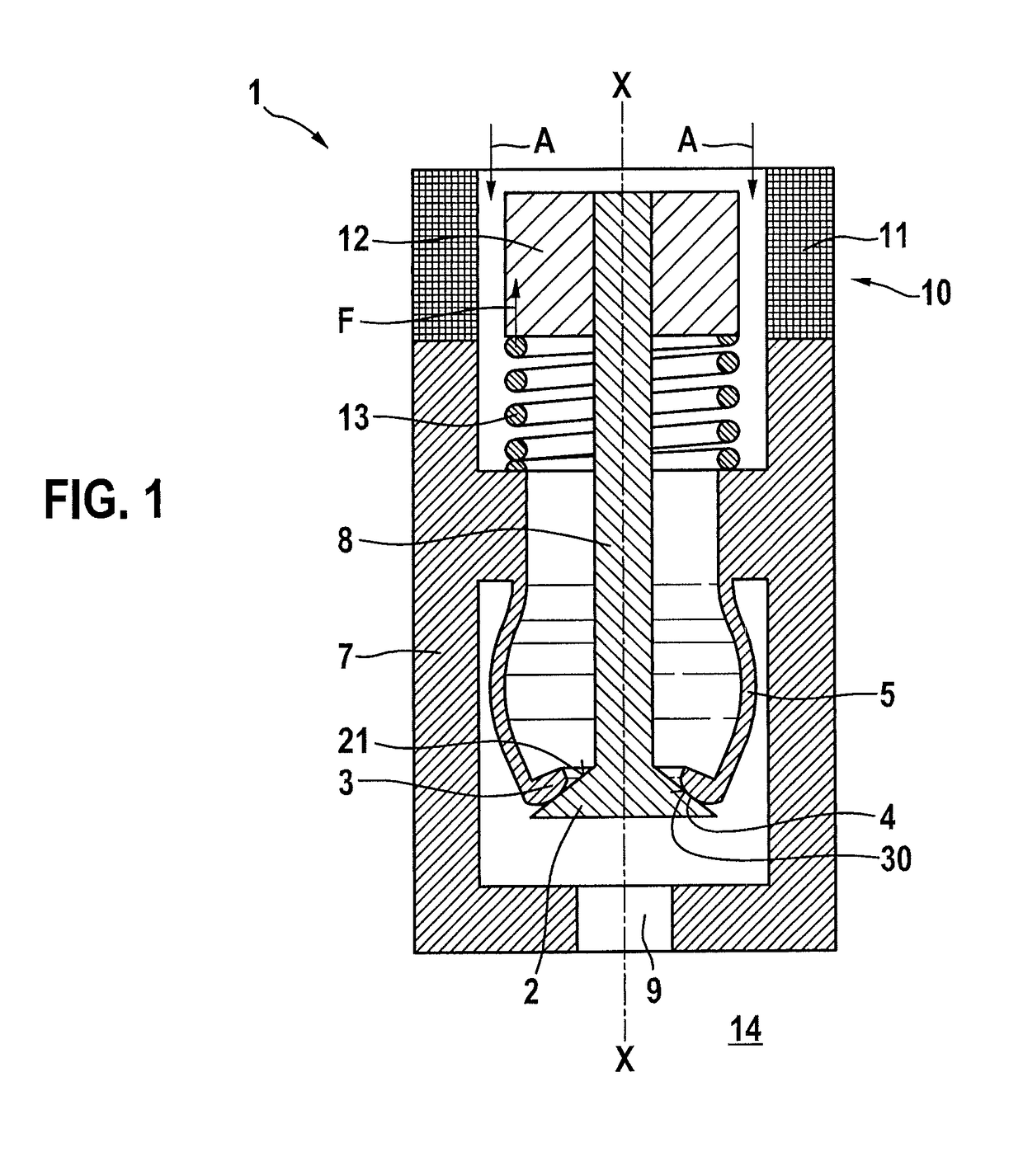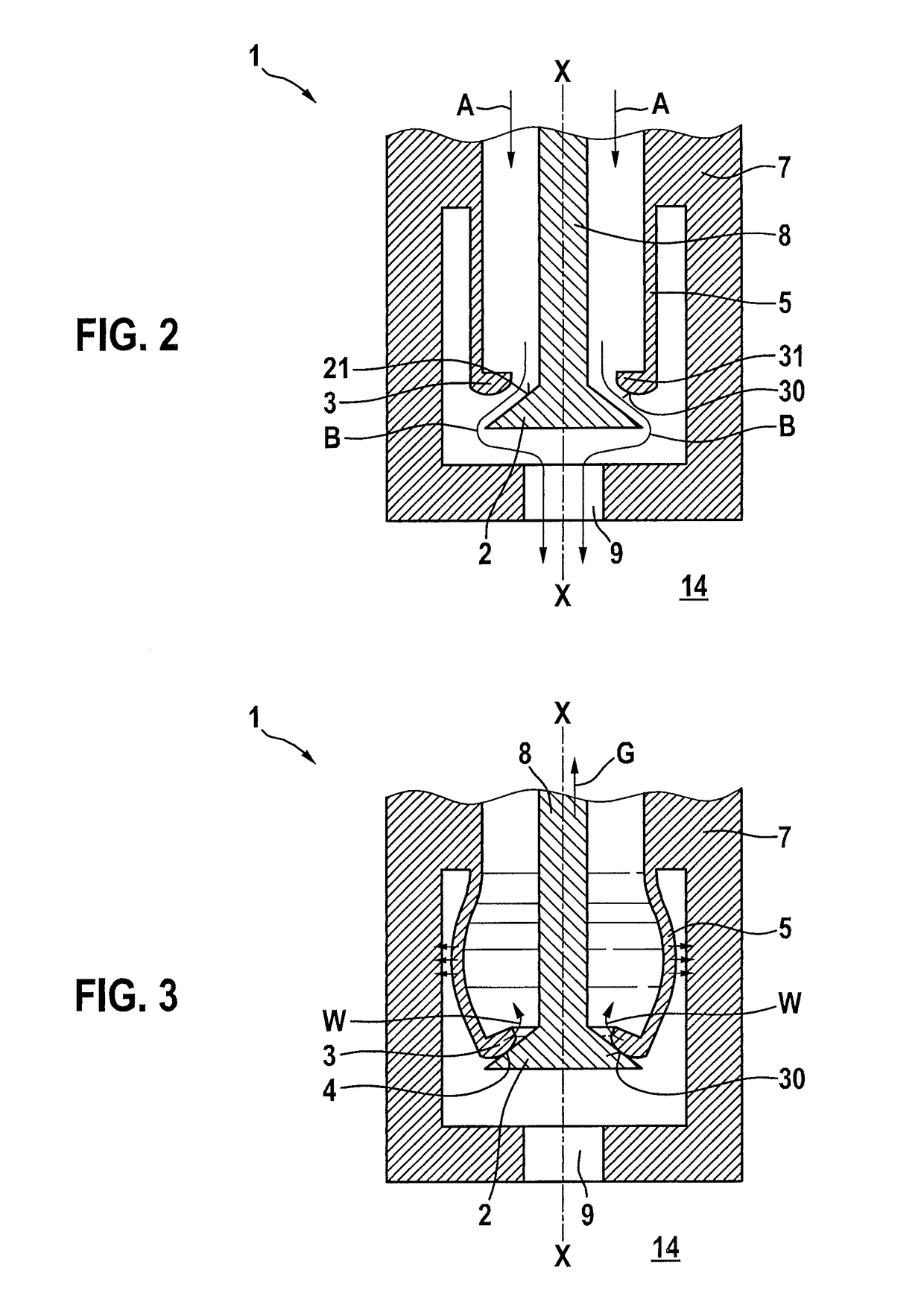Injector, in particular an injector for gaseous fuels
a gaseous fuel and injector technology, applied in the field of injectors, can solve the problems of limited temperature resistance, wear resistance, and use, and achieve the effects of reducing noise development and wear, reducing force spikes, and reducing the effect of force spikes
- Summary
- Abstract
- Description
- Claims
- Application Information
AI Technical Summary
Benefits of technology
Problems solved by technology
Method used
Image
Examples
Embodiment Construction
[0019]In the following text, an injector 1 according to a first exemplary embodiment of the present invention is described in detail with reference to FIGS. 1 through 3.
[0020]FIG. 1 schematically illustrates the structure of injector 1, which is a blow-in injector in this exemplary embodiment, which injects directly into a combustion chamber 14. Injector 1 includes a first sealing element 2 and a second sealing element 3. FIG. 1 shows the closed state of injector 1. A first sealing region 4 is configured between the two sealing elements 2, 3. In addition, an elastic deformation region 5 is provided on second sealing element 3, separately from sealing region 4.
[0021]First sealing element 2 is configured in one piece with a valve needle 8 and has a tapering sealing surface 21. Sealing surface 21 may be conical. Second sealing element 3 is cylindrical in the relaxed state (FIG. 2). At its radially inwardly directed region second sealing element 3 is provided with an annular flange 31. ...
PUM
 Login to View More
Login to View More Abstract
Description
Claims
Application Information
 Login to View More
Login to View More - R&D
- Intellectual Property
- Life Sciences
- Materials
- Tech Scout
- Unparalleled Data Quality
- Higher Quality Content
- 60% Fewer Hallucinations
Browse by: Latest US Patents, China's latest patents, Technical Efficacy Thesaurus, Application Domain, Technology Topic, Popular Technical Reports.
© 2025 PatSnap. All rights reserved.Legal|Privacy policy|Modern Slavery Act Transparency Statement|Sitemap|About US| Contact US: help@patsnap.com



